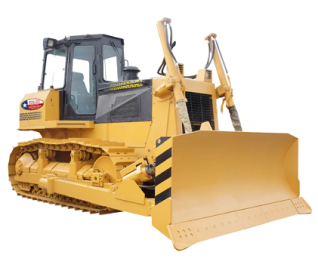The Growing Pattern of Heavy Tools Rental in Various Industries: Opportunities and Difficulties
The surge in hefty equipment rental across numerous markets has emerged as a tactical response to progressing market demands, providing remarkable advantages such as boosted expense efficiency and enhanced access to cutting-edge innovation. This fad is not without its issues, including issues regarding tools accessibility and quality criteria.
Introduction of Hefty Tools Rental
The hefty devices leasing sector has experienced substantial growth over the previous years, with a market value forecasted to get to around $100 billion by 2025. This growth can be attributed to several aspects, consisting of boosted demand for construction tasks, increasing labor prices, and the requirement for organizations to save capital. Companies progressively prefer leasing over acquiring devices to minimize upfront expenditures and upkeep expenses, permitting them to assign sources better.
In addition, technological advancements have transformed the rental landscape, enabling service providers to offer a more comprehensive series of customized tools while enhancing operational performance. These improvements consist of telematics and electronic systems that boost equipment tracking, upkeep organizing, and client service.
Furthermore, the worldwide push in the direction of sustainability has triggered numerous companies to take on rental designs, as they can access modern-day, energy-efficient machinery without the long-lasting commitment of possession. This fad is specifically pertinent as services seek to comply with more stringent ecological guidelines and lower their carbon footprints.
Trick Sectors Embracing Rental Providers
Embracing the flexibility and cost-effectiveness of rental solutions, various industries are significantly transforming to heavy equipment services to satisfy their functional requirements. The construction market leads this pattern, utilizing rental services to accessibility specialized equipment without the monetary worry of long-lasting ownership - boom lift rental. This enables more dynamic job administration and the ability to range sources based upon need
Additionally, the production market is taking on rental solutions to enhance manufacturing capacities without devoting to capital-intensive purchases. By leasing devices, producers can promptly adapt to market variations and technological advancements, guaranteeing they stay affordable.
The power sector, specifically in renewable resource tasks, is likewise leveraging hefty devices services. This technique facilitates the quick mobilization of equipment for temporary jobs, such as wind farm installations or solar panel setups, while lessening upfront prices.
Additionally, the landscaping and agriculture industries are recognizing the advantages of services for seasonal demands. By renting tools, these sectors can effectively handle procedures throughout peak periods without excess financial investment in equipment that may stay idle for much of the year. On the whole, these essential sectors highlight the expanding approval of heavy devices rentals as a critical operational choice.

Advantages of Renting Out Equipment
Countless advantages accompany the choice to rent out heavy equipment, making it an appealing option for organizations across various fields. Renting out eliminates the demand for considerable capital financial investment, enabling companies to assign resources much more properly.
Furthermore, renting out equipment supplies accessibility to the latest innovation and equipment without the worry of ownership. As suppliers continually innovate, companies can gain from sophisticated tools that improves efficiency and safety. equipment rental company. This accessibility additionally prolongs to a diverse series of specialized machinery customized to details task requirements
An additional secret advantage is the versatility that rental contracts supply. Business can easily scale their equipment requires up or down based on project needs, preventing overcapacity and underutilization. Rental business usually give upkeep and assistance services, alleviating businesses of the duty for upkeep and repair services.

Difficulties in Heavy Equipment Rental
Navigating the hefty devices rental landscape provides numerous obstacles that organizations need to take into consideration. One of the main problems is the unpredictability of devices accessibility. High demand, particularly during peak building and construction periods, can cause scarcities, forcing business to delay tasks or seek alternate services. In addition, the varying quality of rental devices postures a substantial worry. Not all rental firms maintain their fleets to the very same requirements, which can result in unexpected malfunctions and raised functional expenses.
Furthermore, rental contracts can be intricate, typically containing hidden fees and uncertain terms that may lead to conflicts. Leasing equipment without experienced personnel you can find out more can lead to ineffective use, mishaps, and more costs.
Lastly, changing market problems can influence rental rates, making budgeting and monetary forecasting much more tough for services. These difficulties necessitate cautious planning and strategic partnerships within the rental sector to ensure that firms can successfully browse the intricacies of heavy tools service while taking full advantage of performance and reducing expenses.
Future Patterns and Considerations
As the heavy devices service industry progresses, several essential patterns are arising that companies need to take into consideration to stay affordable. One of the most considerable fads is the growing fostering of technology, especially telematics and IoT-enabled equipment. These advancements permit real-time tracking of devices performance, leading to enhanced upkeep schedules and boosted operational effectiveness.
Additionally, sustainability is ending up being a central emphasis, with an increasing number of firms looking for eco-friendly devices alternatives and techniques. This shift not just fulfills governing needs but also straightens with corporate social obligations.
Moreover, the surge of shopping platforms for devices rental solutions is transforming customer interactions. Services have to buy easy to use on-line systems that help with seamless deals and offer detailed product info.
Final Thought

In conclusion, the raising reliance on heavy equipment service across different markets highlights its potential to improve functional efficiency and reduce prices. Difficulties such as equipment accessibility, quality inconsistencies, and complex rental arrangements need to official source be dealt with to totally leverage the benefits of this design. By proactively tackling these concerns, industries can enhance source monitoring and promote a more lasting strategy to hefty equipment application, eventually driving growth and innovation in a progressing market.
The surge in heavy tools leasing throughout different industries has actually emerged as a strategic feedback to advancing market demands, using significant benefits such as improved price efficiency and enhanced access to advanced modern technology.Embracing the flexibility and cost-effectiveness of rental services, numerous industries are increasingly transforming to heavy devices services to fulfill their functional demands. On the whole, these vital industries show the growing acceptance of heavy devices rentals as a tactical functional selection.
Browsing the hefty tools rental landscape offers numerous challenges that businesses need to consider.In verdict, the increasing reliance on hefty devices rental across various sectors highlights its potential to improve operational efficiency and decrease costs.